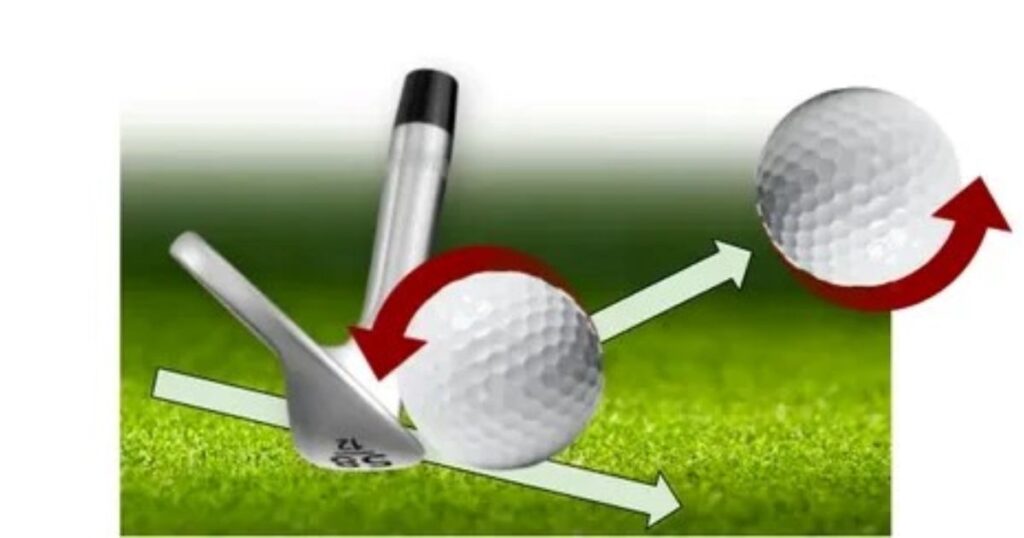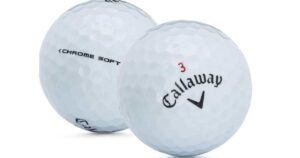A golf ball typically weighs about 45.93 grams or 1.62 ounces. It’s small and lightweight, designed for golfers to hit long distances. The weight is standardized by golf governing bodies. The ball’s weight affects its performance in the game.
Curious about golf ball weight? Wonder no more – “How Heavy Is A Golf Ball?” is the question we’ll explore. Golfers, beginners and pros alike, understand that this seemingly small detail packs a punch when it comes to the game. So, let’s tee off on the fascinating journey of golf ball weight and its impact on your swings!
Stay with us as we uncover the weight of a golf ball. This small sphere, often underestimated, plays a significant role in the sport of golf. Its weight can impact your distance and accuracy on the greens. Let’s dive into the world of “How Heavy Is A Golf Ball” to enhance your golfing knowledge.
Why Does Golf Ball Weight Matter?
The weight of a golf ball may seem insignificant, but it plays a crucial role in a golfer’s game. The reason golf ball weight matters is because it directly impacts the distance and accuracy of your shots. A heavier golf ball can travel farther, while a lighter one may not reach the desired distance. This weight difference also affects how the ball interacts with the clubface, influencing the ball’s trajectory and spin.
Moreover, golf ball weight affects a player’s feel and control on the course. Heavier balls provide a sense of stability and control during the swing, making them a preferred choice for some golfers.
On the other hand, lighter balls, like the ones labeled as Golf Balls Come In A Box, can be easier to launch and may suit players looking for added distance. So, whether you’re seeking precision or power in your golf game, understanding and selecting the right golf ball weight is an important decision that can greatly impact your performance.
Golf Balls Weight Restrictions
Golf balls come with specific weight limitations. This means they cannot exceed a certain weight, and this rule is crucial in maintaining fairness and consistency in the game. Golfers must ensure that their balls adhere to these weight restrictions to uphold the integrity of the sport.
The weight restrictions on golf balls serve as a fundamental aspect of the game, ensuring that all players compete on a level playing field. By adhering to these regulations, golfers can enjoy a fair and balanced game where skill and technique are the primary determinants of success. It’s essential for golfers to be aware of and comply with these weight limitations to participate in the sport with integrity.
The Heaviest and Lightest Weight of Golf Ball per Brand
When it comes to golf balls, each brand offers options with different weights. Some golf balls are on the heavier side, providing a solid feel and added distance, while others are lighter, offering improved control and precision. These variations in weight are tailored to cater to the diverse preferences and playing styles of golfers.
Golf ball manufacturers understand that golfers have distinct preferences, so they produce both heavy and light options. Heavier golf balls tend to travel farther, making them ideal for those seeking more distance off the tee.
Lighter golf balls, on the other hand, are favoured by players who prioritise accuracy and control, allowing them to finesse their shots with greater ease. By offering a range of weights, golf ball brands ensure that golfers can find the perfect ball to match their game.
Does the Average Weight of a Golf Ball Change During Golfing?
Have you ever wondered if a golf ball’s weight changes while you’re out on the golf course? The average weight of a golf ball is a common point of curiosity for golf enthusiasts. In this article, we will examine whether the weight of a golf ball fluctuates during a game of golf.
As we delve into this question, we’ll explore the factors that might influence a golf ball’s weight, such as dirt and moisture. By the end of this discussion, you’ll have a better understanding of whether your golf ball retains its initial weight throughout a round of golf.
How the Weight of a Golf Ball Affects Players
The impact of a golf ball’s weight on players is a key factor in the game of golf. The weight of a golf ball significantly influences how it performs when struck by a player. Lighter golf balls are known to travel greater distances due to their increased speed off the clubface, making them popular among players looking for longer drives.
On the other hand, heavier golf balls provide more control and are favoured by those who prioritise accuracy and spin when approaching the green.
In the world of golf, understanding the implications of a golf ball’s weight is essential. A golfer’s choice between a light or heavy golf ball can profoundly affect their overall performance on the course.
Lighter balls can offer impressive distance off the tee, while heavier balls enable golfers to finesse their shots and achieve greater precision during their short game. The weight of the golf ball ultimately plays a pivotal role in tailoring a golfer’s strategy to match their strengths and preferences.
Final Thoughts on How Much Does a Golf Ball Weight
Weight matters in golf, and it’s essential for players to carefully consider the weight of their golf balls. The choice between lighter and heavier golf balls can significantly impact a golfer’s performance on the course.
Lighter balls often offer greater distance, which can be advantageous off the tee, while heavier balls provide more control, aiding precision on approach shots and putts. Ultimately, the weight of a golf ball is a critical element to consider, and golfers should experiment to find the right balance that suits their playing style and preferences.
Why Golf Balls Have Dimples: How Do Dimples Help?
The dimples on a golf ball might seem like a mere aesthetic feature, but they serve a crucial purpose in the game of golf. Dimples help enhance the aerodynamics of a golf ball. When a golf ball is struck, the dimples reduce air resistance and create turbulence around the ball, allowing it to maintain lift and stay in the air longer. This results in increased distance and accuracy.
Golfers should appreciate that the science behind these dimples plays a pivotal role in shaping their game, and the design of golf balls continues to evolve to optimize performance. Understanding how dimples work can provide players with a competitive edge when selecting the right golf ball for their game.
How To Spin A Golf Ball:

Perfecting The Spin ShotMastering the art of spinning a golf ball is a skill that can elevate a player’s short game to the next level. To achieve this, golfers need to employ precise control and spin-inducing techniques when striking the ball. Utilizing the right golf ball, along with a combination of backspin and sidespin, allows golfers to stop the ball quickly on the green and control its movement.
Achieving the perfect spin shot requires practice and skill, and it’s a technique that can significantly impact a golfer’s ability to approach the pin with confidence and accuracy.
The Best Golf Balls for Seniors
Seniors often have unique requirements when it comes to golf balls. Golf ball options for seniors should prioritize distance, forgiveness, and a softer feel. These factors can help older golfers maintain their enjoyment of the game and make it easier on the body.
Golf balls designed with senior players in mind often feature a low compression core, which can help increase launch speed and maximize distance, which is especially beneficial for golfers with lower swing speeds.
The Best Golf Balls for Beginners
For those just starting in the world of golf, the choice of golf balls can make a significant difference in their learning curve. Beginner-friendly golf balls typically have a durable cover and provide ample forgiveness.
These characteristics allow beginners to focus on their swings and shots without the added pressure of using high-performance balls. Additionally, golf balls designed for beginners are often more affordable, making it easier for those new to the game to practice and refine their skills without breaking the bank.
These topics cover a range of aspects related to golf balls, from their weight to their design and suitability for different types of players. Understanding these nuances can help golfers make informed choices that improve their performance on the course.
FAQS
How heavy is a standard golf ball?
A standard golf ball typically weighs around 1.62 ounces (45.93 grams).
Do golf balls come in different weight options?
Golf balls are typically standardized in weight, but some variations exist for specialized purposes.
Why is the weight of a golf ball important?
The weight of a golf ball affects its performance, impacting distance, control, and feel.
Can you use heavier golf balls in competitions?
Golf rules dictate that balls must conform to specific weight and size standards in most competitions.
Conclusion
Understanding “How Heavy Is A Golf Ball” is crucial for golf enthusiasts. A standard golf ball typically weighs around 1.62 ounces (45.93 grams). The weight of a golf ball may seem like a minor detail, but it plays a pivotal role in shaping a golfer’s performance.
Lighter golf balls often offer greater distance off the tee, while heavier ones provide more control and accuracy. By grasping the significance of golf ball weight, players can make informed choices to suit their playing style and achieve their desired outcomes on the course.











